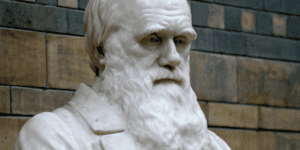
Everything That Has Breath
Bubbles billowed heavenward with every measured breath as I adjusted my mask, cleared my ears, checked my depth gauge, and glanced down at my Luminox Navy Seal dive watch. Kneeling on the silt floor of the Red Sea, 41 feet below the water surface, we watched and waited, hoping to spot a dolphin.
by William Polk Cheshire, Jr., MD, MA
Bubbles billowed heavenward with every measured breath as I adjusted my mask, cleared my ears, checked my depth gauge, and glanced down at my Luminox Navy Seal dive watch. Kneeling on the silt floor of the Red Sea, 41 feet below the water surface, we watched and waited, hoping to spot a dolphin.
Underwater the temperature was 84 degrees Fahrenheit, while on the surface the weather in Eilat was a pleasant, sunny, 74 degrees. At the southern tip of Israel, Eilat sits directly on the Great Rift Valley at the intersection of two tectonic plates. Gradual divergence between the African Plate and the Arabian Plate formed the Red Sea, which fills an oceanic rift that is expanding at a rate of 1 cm/year. This tectonic junction also marks an age-old geopolitical dispute between Israel and its Arab neighbors. Eilat is wedged between Jordan and Egypt, the highly secured borders of which lie about three miles to the northeast and three miles to the southwest of where I was.
The Red Sea’s extensive shallow shelves support miles of colorful coral reefs, which are home to abundant marine life and make Eilat and nearby Aqaba prime destination spots for scuba diving. On previous dives that week off the shore of Eilat, I had seen numerous arrays of fish as well as moray eels, lion fish, nurse sharks, starfish, a sea turtle, and a striped sea snake. Especially memorable was the night dive when Chico (a local Israeli divemaster) and I explored the wreck of the Satil. An hour after nightfall, from the sandy shore we waded into the briny blackness. Pushing our way past splashing waves, going deeper and deeper, within minutes we were immersed. Once underwater, the visibility was so clear that, even in the dark of night, the glow from distant shore lights provided sufficient illumination for us to see each other and to navigate. We turned off our flashlights. As our eyes adjusted to the muted lighting, we descended into a strange, beautiful, ethereal, underwater world. It was as if we had entered a huge snow globe. Hovering over the nocturnal seascape, every movement of our hands and flap of our fins stirred up bioluminescent algae sparkling all around. The experience was magically unlike anything I had ever imagined.
Today I had come a mile to the north, to Dolphin Reef, an ecological site that cultivates botanical ponds and hosts a school of bottlenose dolphins. Visitors have the opportunity to observe and swim with the dolphins.
My Israeli guide was Moshe. His name translates in English to Moses-a fitting name for the guide of a journey to the floor of the Red Sea-but unlike the biblical patriarch, this Moses was not exactly Torah-observant. When he learned that I was a physician, he asked for advice on cooking up homemade hallucinogenic drugs.
Still kneeling on the Red Sea floor ten minutes later, the sea was quiet. No dolphins were in sight. This might be a day that they just did not come. The staff biologist leader of our group of six had told us before the dive not to be disappointed if no dolphin approached any of us directly, as they typically came only to him, whom they recognized, but not to visiting strangers.
On the sea bed we sat, kneeling, waiting, our periodic exhalations rising here and there as if from an assembly of change bells, their rhythm an indication of life, their hushed melody a signature of ineffable human aspiration.
When submerged in the sea with an aluminum tank fastened to one’s back, inhaling compressed air through a regulator lodged between one’s teeth, it is still possible to pray-silently. Human vocal cords are not designed to work underwater, but language claims a broader territory than audible speech. As I prayed, the image came to mind of a storm that had once tossed and threatened a small boat on the Sea of Galilee, just 260 miles to the north. When Jesus spoke to the winds and the waves, they obeyed, and the sea became calm.[1] I invited Jesus to be with us now.
No sooner had my prayer bubbles reached the surface than, suddenly, out of the distance a dolphin approached our group, but instead of going to the group leader, who was waving his hands trying to attract the dolphin’s attention, he-or it might have been a she-bypassed the leader and came directly to me. Paused at arm’s length right in front of me, the gray aquatic mammal gazed into my face. There was an intelligence in the way he studied me, something about his eyes that conveyed interest and curiosity. I had not expected this.
The dolphin seemed to invite contact, and I reached up and stroked his soft rubbery skin. Although the anatomy of dolphins’ permanently curved mouths suggests a fixed smile, dolphins lack muscles of facial expression. They are nevertheless highly social animals and communicate through body language and blowhole vocalizations. Perhaps God has endowed dolphins with subtle ways of communication among themselves, if not also with Him, that we have not yet discovered.
As my mind spun in wonder, the dolphin sped away with a swiftness impossible for humans. He was in his natural element. I was not, but for a moment we connected in a way I cannot adequately describe.
William P. Cheshire, Jr., MD, MA, is a Professor of Neurology at Mayo Clinic and a CMDA Trustee. Dr. Cheshire received his AB in biochemical sciences from Princeton University, his MD from West Virginia University and his MA in bioethics from Trinity International University. He completed his neurology residency and pain fellowship at the University of North Carolina. He is board certified in neurology and in autonomic disorders. He is a past president of the American Autonomic Society. With Doris, his wife of 38 years, he lives in Ponte Vedra Beach, Florida and attends the Church of the Redeemer, which is affiliated with the Anglican Church of North America.
[1] Matthew 8:23-27, Mark 4:35-41, Luke 8:22-25.
[2] Richard A. Swenson. More Than Meets the Eye: Fascinating Glimpses of God’s Power and Design. Colorado Springs, CO: NavPress, 2000, pp. 29, 188-189.










